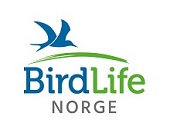
|
|
This international publication is based on millions of counted and ringed birds, where every individual counts. Migratory birds in Europe and Canada have advanced the timing of their spring migration due to climate change
A new article on climate change and seasonal timing of bird migration was published in February 2019 in the international journal «Ecological Indicators». These effects have often been tested using first occurrence dates, which may be uninformative and biased. Few investigations has shown how different phases of a phenology sequence or its duration has changed over time. This type of analysis requires continuous observations covering the whole migration period in multiple years, and such data sets are rare. The study is based on long term monitoring data from 2 continents, using data of 195 species from 21 North European and Canadian bird observatories. We are proud to tell that Lista Bird Observatory is an important contributor to this article, having provided data from the Observatory collected from 1990 to 2015. In this study it constructed the first multi-species spring migration phenology indicator to describe general changes in median migration dates in the northern hemisphere. The indicator shows an average advancement of one week during 5 decades across the continents from 1959 to 2015. The results show that birds have advanced the beginning (5 %) and the median (50%) migration phases more than the end of their migration (95 % migration date) in spring, leading to extended spring migration season. The duration of migration season has been longer with rising temperatures. This change has been more noticeable in Europe than in Canada, as spring temperatures have increased more quickly in Europe. Short distance migrants, especially in Europe, has advanced their beginning of migration more than long- distance migrants, but such a difference was not found in other phases of migration. The longer migration period is shown as an asymmetric advancement. This information can be very relevant to the different bird monitoring schemes. As the changes does not shift symmetrically, there are no clear solutions by changing the monitoring periods. These changes may also have broader implications on population and community dynamics. Sometimes it can be hard to explain to the public at Lista B.O. why bird ringing and monitoring might be relevant. This article shows that standardized bird ringing has advanced our understanding of the ecology, behaviour, life-histories and evolution of birds. Articles like these is the best example for us to show the importance of the systematic monitoring schemes, the long-term monitoring data, co-operation between bird observatories and the help of volunteer birders. If you want to read the whole article click HERE. | |||||

| Ringing numbers | ||||
|
| Reportasje fra Lista FS i Aftenposten |

|
| Seasonal deviation | ||||||||||||||||||||||||||||||
|
|
Følg Følg Lista FS på facebook.com |
| Siste 5 på siden |
|
Looking for bird ringers for spring and/or autumn 2025 Begynnerkurs i ringmerking: 26.-27. april 2025 Report from autumn 2024 Lista Fuglefestival 2024 A total of 100 radio transmitters will be attached |
| Nyheter fra NOF |
|
Tamender er problematiske for... Velkommen til BirdLife Norges... Tjeldsundet i fare! Måker og mennesker: Veileder... Naturvern er egentlig gratis Greit år for åkerriksa i 2024 Hubro på avveie Spill på lag med fremtiden og... |
Lista Fuglestasjon
Fyrveien 6
NO-4563 Borhaug
post@listafuglestasjon.no Tlf: 949 86 793
 |  |


 Only in English
Only in English



